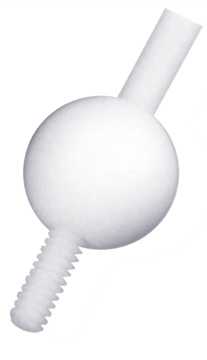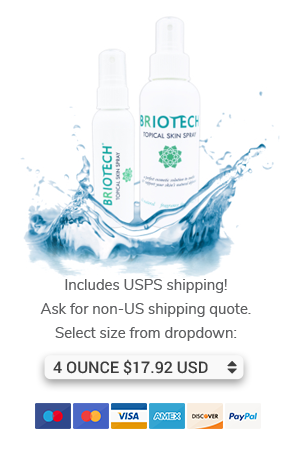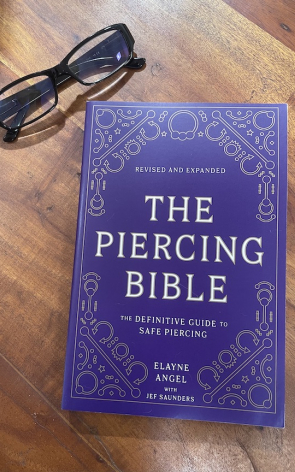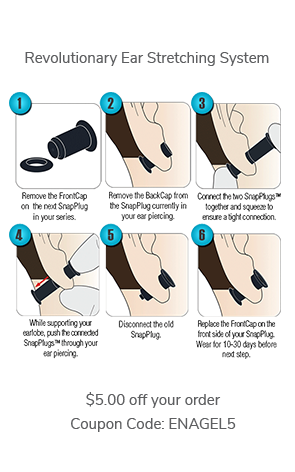I recently had an exchange of correspondence with a piercer who asked some interesting questions:
I have been piercing for 10 years now in a shop where my husband is the awesome tattoo artist. I just want to be yet another one to thank you for all of your tireless dedication to this industry. I just had a quick question about surface piercings done with polytetrafluoroethylene. At first when these surface piercings became the thing to do around here, I would perform them with the traditional bars for hips, clavicals, Madisons-you name it. I stuck them all with bars. Now this new material seems so much better for healing and does not leave the same scars that the bars do. I just wanted to get your opinion on it. Which is better, the polytetrafluoroethylene or the traditional surface bars?
My reply:
Thanks for your message and congratulations on your tenure in the industry. 

I'm a huge fan of polytetrafluoroethylene (PTFE--pictured above and a close up of the cut-to-fit self-threading end, right) as non-metallic retainers for piercings that are suited to barbells. For troubled healing in some ares, they're also really good (nipples that are hard to heal, for example). They're more secure than retainers that use "O" rings to stay in place. Also they're great for tongue piercings where there are concerns about oral health from metal jewelry.
As far as surface piercings go, if what you're doing is working well and the piercings are healing and remaining in place, then I don't see any need to suggest changing anything.
The straight PTFE bars are not actually well suited in terms of jewelry shape--even though they're somewhat flexible. They're not all that malleable, really. If you find PTFE in a surface bar shape, those would be great! I'm not aware of those being available, however. Since my studio in New Orleans closed after Hurricane Katrina, I've been living in Mexico and guest piercing at colleagues' studios. My professional specialty is genital and nipple piercings piercings, so I don't really do much surface work these days--and in fact, I never really did. Over the truly long term, I've seen relatively few stay in when compared to the traditional body piercings that we do.
For the least amount of scarring, I think I'd suggest surface anchors (microdermals) over surface piercings. But I'd be careful to educate clients that the anchors are not expected to be permanent adornments.
Do you have a copy of my book, The Piercing Bible? Some of these things are discussed there, such as using PTFE for inverted nipples.
Let me know if you have other questions.
She responded, and in fact, did have some other questions:
Thank you so much for a speedy, informative reply. It is so refreshing to know that in all your fame and success, you are so down to Earth. In my area, the people who do more advanced things (scarification, suspension etc.) and have been piercing traditionally for 4, 5, 6 years-are such pompous jerks! (Even though I hold the oldest state certificate).
If there were more of a demand for them-I would consider learning the procedures, but I might have 2 people per year ask me to perform those requests. I have no choice but to send them to the "know it all" piercers here in my town. My apprenticeship was done in a very backwoods tattoo shop where genital piercing was not performed and the owner would tell people that tongue piercing was just plain impossible.
Of course I learned to do tongues when I got my first piercing job after that. I was also given a lesson in genitalia piercings from tattoo artist/piercer there. I have been doing the ones I am comfortable with for the past 3 years and I feel I could always know more about what I'm doing.
Your genital piercing information on the website is EXTREMELY helpful. Please don't get the wrong idea, I'm not just blindly poking around down there. If I am not 100% sure on how the procedure is done, believe me-I stay away from it!
I heard with male piercings that if the corpus cavernosum (not sure if I spelled that right) is hit, that the person can bleed to death in my chair? Things like that frighten me a bit.
I was required to read your book way back when I was an apprentice. As of right now I do not have a copy for myself, but I will make sure to remedy that very soon. I am a bit rusty as far as the knowledge retention goes. I can do all the basics with my eyes tied behind my back LoL! Anyway, I don't want to waste your time as I am sure you have others like me pestering you. Thanks again and if I am ever anywhere near the west coast or Mexico, I will surely look you up. Or if you find yourself near my area piercers could sure use a reality check that only you can give!
My reply:
My pleasure. I feel fortunate to still be so passionate about piercings and to love my work so much, even after all these years.
One of the reasons I don't do shaft ampallangs is because they would go through the corpora cavernosa (that's the fancy plural form). I haven't actually seen any verification of someone terminally bleeding out from this, but MAJOR bleeding would be expected and it might be very difficult to stop. Also, I don't do shaft apadravyas due to the location of the deep dorsal vein and artery and risks of excessive bleeding. So, if you stick to frenums on the shaft (just in the pinchable tissue--and check for visible vessels under bright light) and other placements on the glans, then you will not be risking problems with the cavernosa or other major vessels.
I'm not really into "hard sell" techniques, but if you'd like to get an autographed copy of my book, you can order a copy of The Piercing Bible from my website.
I can think of a few other resources that might be useful for you:
The blog archives of my site contain hundreds of posts about piercings.
The APP website contains a FAQ and all kinds of good information.
The APP procedure manual is also available on their site.
Issues of The Point, the quarterly journal of the APP, are all available for free.
If you'd like to see me performing piercings (mostly genitals), and demonstrating exactly where I place them and how, I've got videos available here.(They're not "how-to" videos, per se, but I talk about everything I'm doing so they do share a lot of information!)
The monthly Q & A columns I've written for Pain Magazine (answering piercing questions for piercers) are available. Subscriptions to the paper magazine are free to the trade. Just contact them through the site.
Elayne




